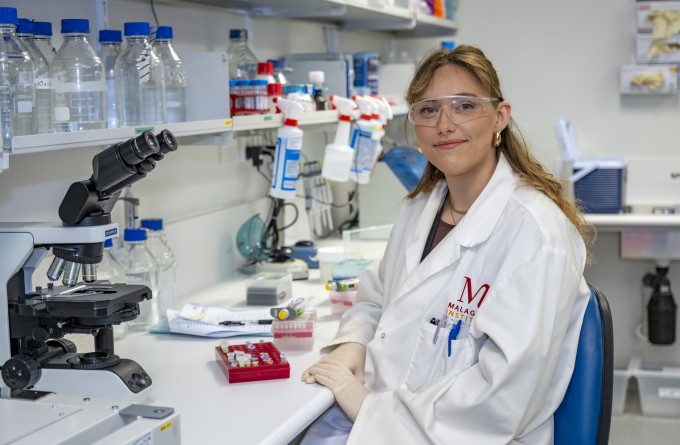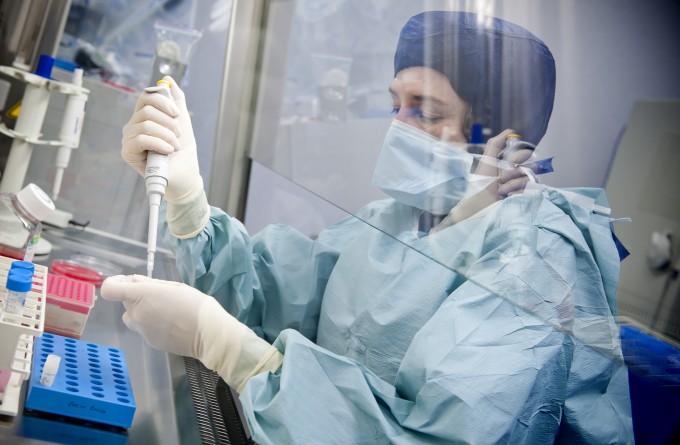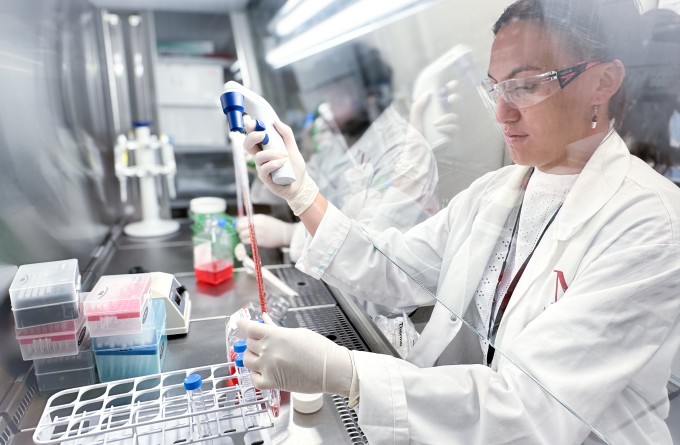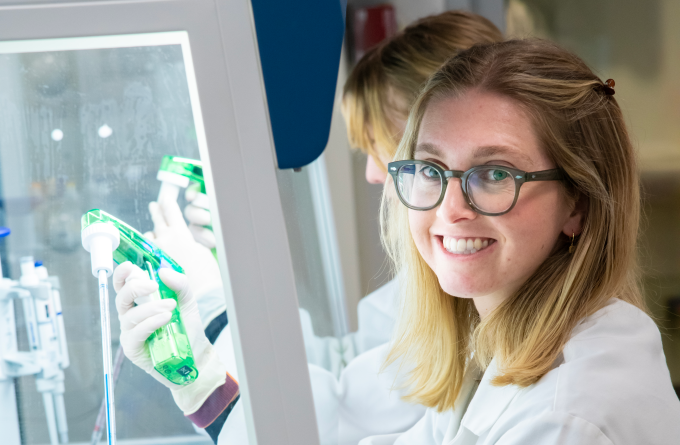8 October 2025
Given the choice, few people would opt to recover in hospital if they could do so safely at home. That choice has become a reality for participants in our ENABLE-2 CAR T-cell trial thanks to promising safety results from our phase 1 trial. However, delivering safe and effective care in an outpatient setting requires having systems in place to closely monitor patients and respond quickly to any signs of concern.

Malaghan Research Officer Danielle Blud, part of the team who worked on the pilot study.
To help improve patient monitoring after treatment, the Malaghan’s CAR T clinical team ran a pilot study, published in the International Medicine Journal, trialling two wearable temperature monitors as a way to catch side effects of blood cancer treatment – with the ultimate goal of supporting safer and more effective outpatient monitoring.

Professor Rob Weinkove
“In RE-TELL, a study of CAR T-cell patient and carer experiences, we found that patients really disliked the long hospital stay,” says Malaghan Institute Clinical Director Professor Rob Weinkove. “It means they have to be away from home, family and pets, and subjects them to infection risk and the hospital food! We also have hospital bed shortages nationally, so there is a pressing need to find innovative ways to safely support outpatient monitoring.”
After receiving treatment for blood cancer – whether it be chemotherapy, CAR T-cell therapy, or some other immunotherapy – patients need to be closely monitored for two weeks or longer to ensure there are no unwanted or potentially dangerous side effects such as infections or the immune system kicking into overdrive.
“Fever is usually the first sign of infection or of inflammatory reactions,” says Prof Weinkove. “Traditionally, we rely on patients staying in hospital, being woken up by nurses to have a temperature check every four hours.”
In some cases, monitoring can be done in an outpatient setting – where the patient isn’t based in the hospital but stays at home or in a nearby hotel, close enough that if there are complications they can be assessed quickly.
“If patients are at home or a hotel, we rely on them self-checking their temperature intermittently or if they feel feverish. Neither of these methods are very good at picking up fevers when they first happen.”
To improve outpatient monitoring, the team trialled two different wearable monitors that track temperatures in real time, picking up fluctuations that could signify fever as soon as it happens.
“We conducted a pilot study in fifteen blood cancer patients who had received intensive chemotherapy or CAR T-cells. Each patient wore two different wearable temperature monitors that were Bluetooth-linked to mobile phones for up to two weeks,” says Prof Weinkove.
While the devices were not used to inform treatment decisions in this study, they provided valuable insight into the feasibility of such devices for patient monitoring and whether patients were open to using such devices in the future.
“In this study, we didn’t use the information to make treatment decisions – we just compared the wearable devices with the results from routine temperature monitoring. Most patients found both wearable monitors tolerable, and the devices detected most fevers, often picking them up an hour or more earlier than routine monitoring.
“However, the wearable monitors didn’t detect every fever, so routine temperature checks remain important – these monitors ‘support’ rather than ‘replace’ normal thermometers.”
Most patients were open to wearing the temperature monitors, and some reported that the monitors might help them feel safer.
The next step would likely be a larger trial, potentially international, to assess wearable temperature monitors in larger numbers of at-risk blood cancer patients. Prof Weinkove notes that some newer monitors include ‘multi-modality sensors’, such as those that can also measure pulse, oxygen levels and blood pressure – these might pick up fevers even earlier, or could be more accurate.
“If proven in a larger trial, wearable devices could be used to allow more patients to safely stay at home following treatment for their cancer, rather than being monitored in hospital.”
Related articles

Tracking the journey of the shapeshifting bacteria behind stomach cancer
19 November 2025

Celebrating milestones in bringing life-saving cell therapies to New Zealand
12 November 2025

Marsden funding to drive discovery and innovation in cancer, allergy and infectious disease research
5 November 2025

Eradicating H. Pylori bacterial infection to reduce stomach cancer
30 October 2025

Developing next generation CAR T-cell therapies for more equitable cancer care
30 October 2025

Making local impact using global training in liver cancer research
30 October 2025
